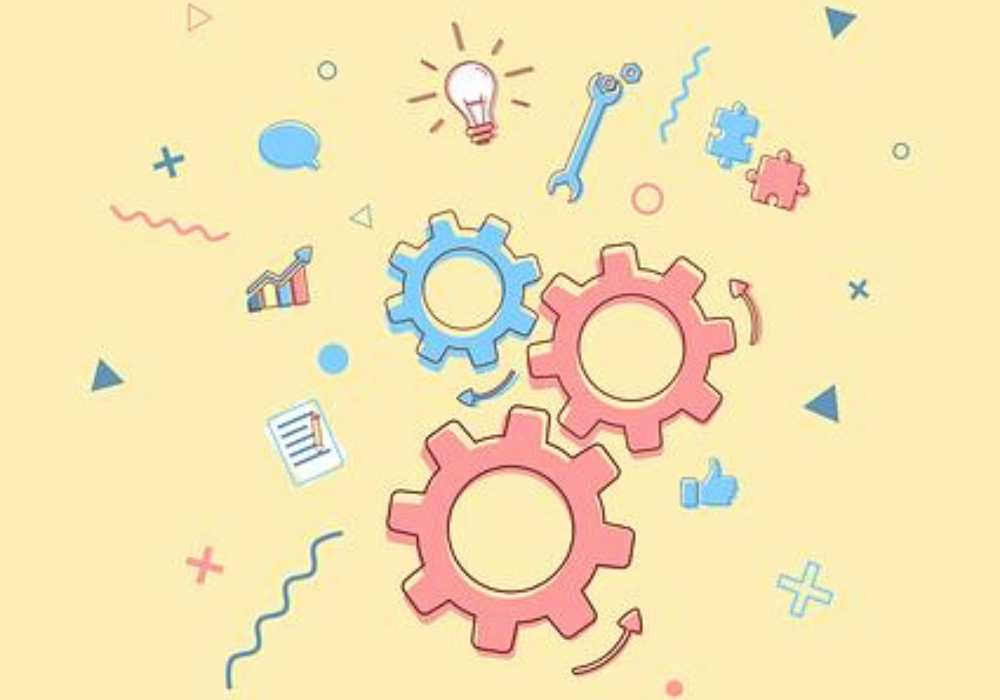Designing for Success Key Information about Design System Every Product Manager Needs to Know

- What is a Design System?
- Why is it Essential to Invest in a Design System?
- How Do Design Systems Streamline the Design Process?
- What are the Essential Elements of a Successful Design System?
- How Does a Design System Benefit Product Managers and Designers?
- How to Create and Maintain a Design System?
- Design Systems for Non-digital Products
- Build Excellent Products with Emeritus
Consistency is the key to success in today’s fast-paced business world. Brands that offer similar experiences, over and over again, are remembered and revered by the audience. Therefore, companies use a design system to create consistent products. They are a set of principles, guides, and components that enable designers to produce high-quality products.
What is a Design System?
A design system is a collection of reusable components, rules, and regulations used while designing a product. They have design languages that ensure the products align with the company’s brand values and business objectives. Hence, companies use this system to maintain uniformity and consistency across products.
Why is it Essential to Invest in a Design System?
The design system is a framework that helps streamline product development and product management processes. Therefore, investing in them can bring significant benefits to companies. Here are some reasons why companies should invest in a good system.
- Ensures consistency across all products in terms of design and user experience. That means it helps create a cohesive brand identity and makes it easier for the audience to trust the brand.
- Designers and engineers can work more efficiently due to design systems. It provides them access to reusable design patterns, components, and guidelines. This saves them both time and energy.
- It makes it easy and convenient to scale products without compromising on quality or user experience.
- Provides a shared language for designers and engineers to collaborate during product development.
- Cost-effective as it saves money spent on rework, redundant design, and inconsistencies.
How Do Design Systems Streamline the Design Process?
Design systems are a centralized source of design guidelines, principles, and components for designers and engineers. The system reduces the time taken to design products and eliminates the need for creating new designs for similar products. Here are some ways in which they streamline the design process.
Collaboration
Design systems provide a framework for designers and engineers to work together. They provide a shared language that reduces misunderstandings and improves communication.
Speed
A design system includes pre-designed components, templates, and patterns that can be easily reused across products. With pre-designed components, designers can create high-quality designs much faster.
Scalability
Organizations can scale design systems to accommodate the growth of a company’s product offerings or modern innovations.
What are the Essential Elements of a Successful Design System?
A successful design system has two key elements—the design repository and the design team. The design repository includes elements like a style guide, component library, and pattern library. In short, it contains all the elements required for maintaining consistent product design. Meanwhile, the design team consists of product managers, engineers, and other people involved in the design process.
Design Repository
A design repository includes three elements: a style guide, a component library, and a pattern library.
- The style guide consists of implementation guidelines, design principles, and visual references that can be used while designing a product. Style guides generally focus on visual references like colors, logos, and typography. However, in some cases, it can also provide guidance on the content.
- Component libraries are also known as design libraries. Component libraries are a one-stop destination for designers and engineers to learn about different User Interface (UI) elements. Moreover, they include reusable UI elements, front-end and back-end frameworks, descriptions, and others.
- A pattern library is a collection of UI-element groupings such as content structure, product layouts, and templates. Designers and engineers can re-use these grouping for product development and also to get a consistent and intuitive user experience.
Design Team
A design system is only as effective as its team. Therefore, to make the most of this system, companies need to employ designers and developers capable of using it to gain an edge over the competition. Moreover, the team is responsible for updating the design system to ensure it doesn’t become outdated.
How Does a Design System Benefit Product Managers and Designers?
A design system can positively impact the organization’s objectives, workflow, and user experience. Furthermore, it has a positive effect on the customers and the employees. Here are a few benefits
- Design systems must be updated from time to time by the design team, including designers, product managers, and engineers. This way, the design team can acquire current skills and knowledge related to their field.
- Improves employee productivity by automating the design process. Engineers and designers don’t need to spend long hours to finalize a product design that matches the company’s brand guidelines. They can just use a design system for that.
- Knowledge sharing among employees of an organization. Documentation is one of the main elements of the design system. Good documentation ensures that the company’s design guidelines are understood and implemented across the organization.
How to Create and Maintain a Design System?
Here are the key steps involved in creating and maintaining such a system.
Step 1: Establish Goals and Objectives
Before creating a design system, it’s important to establish clear goals and objectives. Consider what problems the design system will solve, who the target audience is, and what outcomes one hopes to achieve with the system.
Step 2: Conduct Research and Gather Data
The next step is to gather data about users, competition, and industry best practices to create an effective design system. Product managers can use data from user surveys, user testing, competitive analysis, and trend research to gather data.
Step 3: Develop a Style Guide
A style guide serves as the foundation for a design system. It provides guidelines for typography, color palettes, and more visual elements. Develop a comprehensive style guide that outlines the rules and standards for product design.
Furthermore, managers can create and develop a component and pattern library that contains pre-designed components. They can use it (component and pattern library) to enhance the user experience and align with the style guide.
Step 4: Test and Iterate
Once your design system is in place, testing and iterating are important to ensure it’s effective. Gather feedback from managers, designers, and engineers, and use that feedback to improve and update the design system.
Step 5: Maintain the Design System
This system is an ongoing effort. Therefore, managers must develop a design system that is easy to maintain and update.
Design Systems for Non-digital Products
Organizations can also use these systems to design non-digital products. Although design systems are often associated with digital products, consistency, efficiency, and scalability apply to all products.
For instance, a local clothing brand could develop a design system that includes guidelines for typography, color palettes, and visual elements. Furthermore, it includes packaging, labeling, and other brand elements guidelines to ensure consistency and alignment with the brand’s values. For instance, an international clothing brand can use design systems to ensure product uniformity and consistency.
Build Excellent Products with Emeritus
Want to build excellent products? Take Emeritus’ product management courses. These courses are designed to give learners an understanding of a product’s life cycle and improve their product strategy skills. Joining these courses will give learners an in-depth knowledge of product positioning, marketing, product strategy, and branding.







